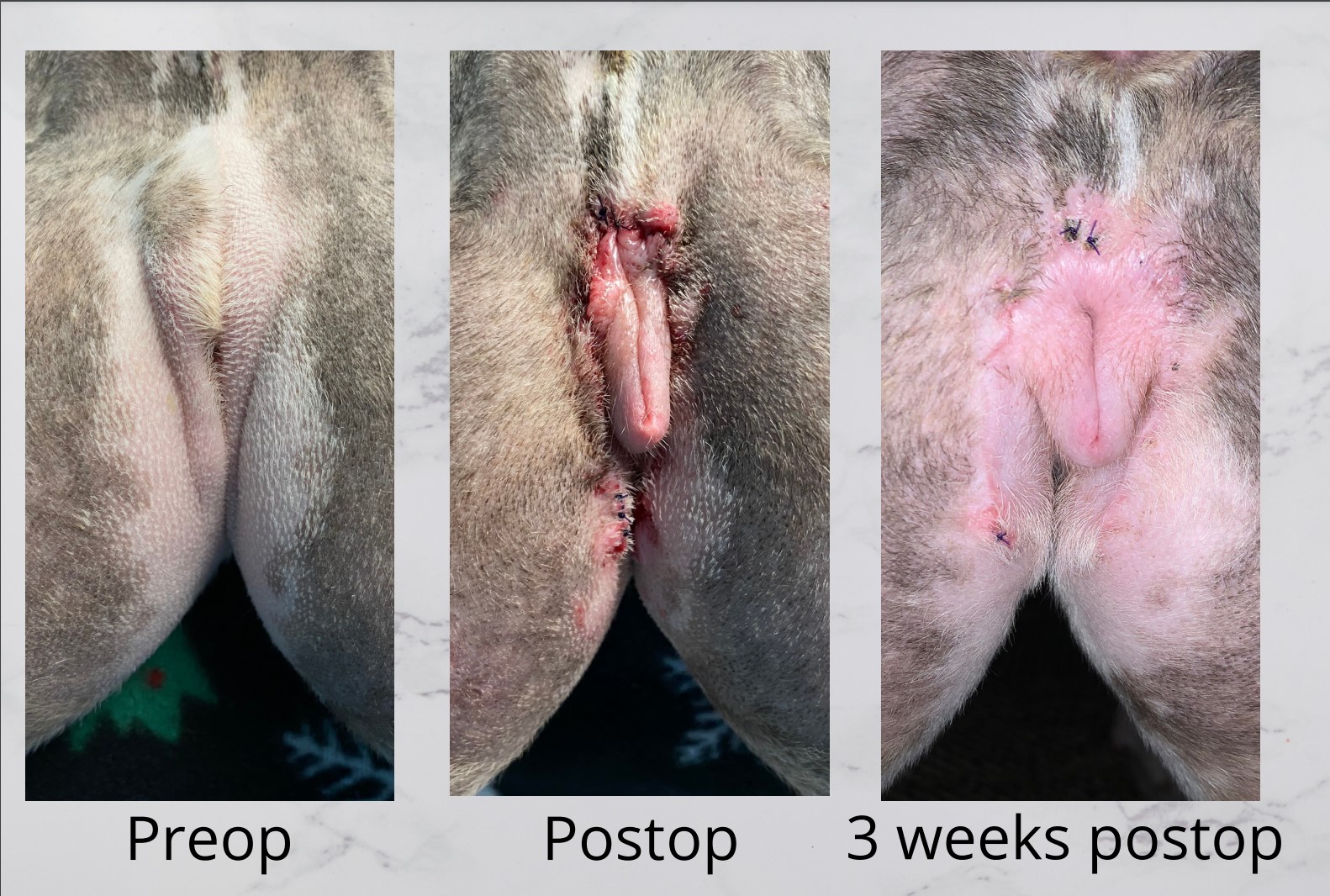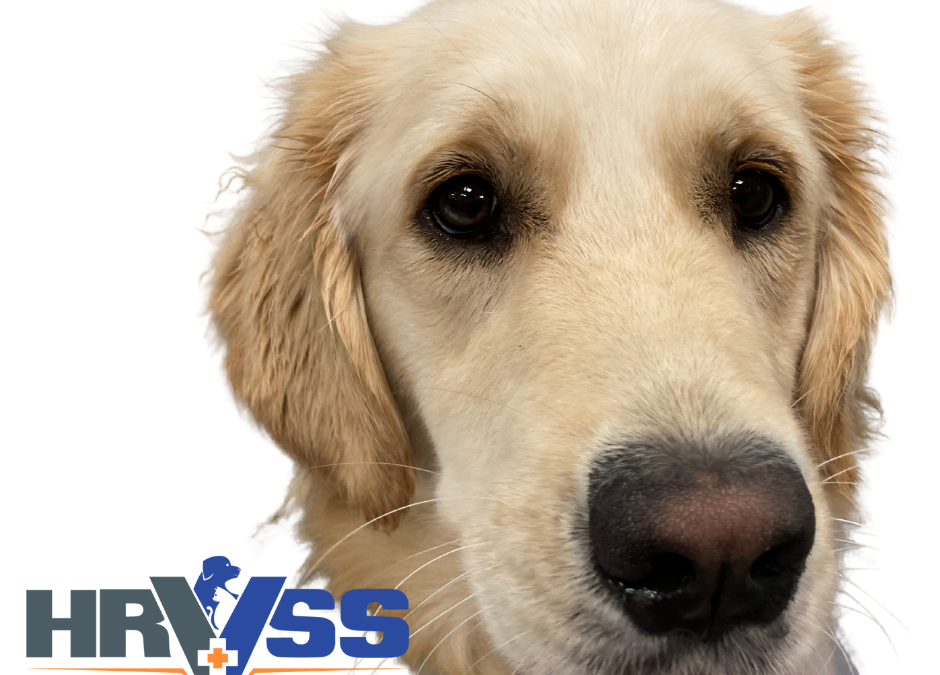An emergency vet then realized that Jane had an excessive amount of skin covering her private parts.
Get ready for a very sensitive discussion about a very sensitive area: the vulva.
There are many names for the condition, including:
- Redundant vulvar fold
- Vulvar fold dermatitis
- Hooded vulva
- Infantile vulva
- Recessed vulva
The extra skin fold causes friction and small amounts of trauma to that area. This is uncomfortable or at the very least annoying. It usually causes dogs to lick the area – only making the situation worse.
The excess skin also acts as a pocket that traps urine. Constant moisture, combined with darkness and body heat, is the perfect environment for bacteria to thrive. This can cause infection of the skin itself. The infection then travels up through the urethra and into the bladder. In addition, it can lead to a pretty bad smell.
Medical or conservative treatment can be quite frustrating because it does not address the cause. Antibiotics and cleaning of the area can treat the infection, but relief is usually short-term.
The best treatment is surgery to remove the extra skin around the vulva. The end goal is to provide air to the area.
The reconstructive surgery is called episioplasty or vulvoplasty. The main challenge is to remove exactly the correct amount of skin: not too much and not too little. This makes the surgery an art as much as a science.
Not removing enough skin will lead to similar, albeit decreased signs. Removing too much skin may cause opening of the incision because of excessive pressure along the stitches. Such frustrating complications are avoided with experience. Either an experienced family vet or a board-certified surgeon can perform the procedure.
Before surgery, Jane’s owner said: “I was nervous for Jane because she is so scared of going to the vet. I was concerned that we would do the surgery but she still would have issues with bladder infections and licking.”
Below are before and after pictures – of another patient (I may or may not have forgotten to take pictures of Jane!!!).

In the preop picture, there is so much extra skin that you can’t even see the vulva!
In the postop picture, you can see the skin incision over the vulva, now visible.
Jane did great through surgery and anesthesia. She went home to rest for 3 weeks. She had to wear an E collar (Elizabethan collar or plastic cone) to prevent her from delaying healing by licking the incision.
After surgery, Jane’s owner said: “I felt relieved. She seemed a little sad in her cone, but at that point, I knew she would be fine. She had no issues following the surgery and was back to herself in no time.”
She received pain medications and antibiotics. After 3 weeks, the incision was rechecked to confirm proper healing.
Jane’s owner commented: “Jane is doing amazing, and she healed great.”
Overall, this is a common and frustrating condition. Treatment is typically highly successful with surgery. Overall, most pet owners are very happy with the end result.
Jane’s owner concludes: “Best decision ever. I don’t know how much discomfort and bladder infections we have avoided, but I’m sure it’s a lot. Her incisions healed perfectly, and even our regular vet commented on how nice the incision looked. Jane doesn’t lick herself anymore, and she hasn’t had any bladder infections.”
Phil Zeltzman, DVM, DACVS, CVJ, Fear Free Certified
Classic signs of a bladder infection
Depending on the severity and the pet, signs of urinary tract infections (UTI) can include:
- Urge to urinate or asking to go outside multiple times
- Straining to urinate
- “Accidents” in the house
- Bloody urine
- Smelly urine
- Loss of bladder control (a.k.a. urinary incontinence)

